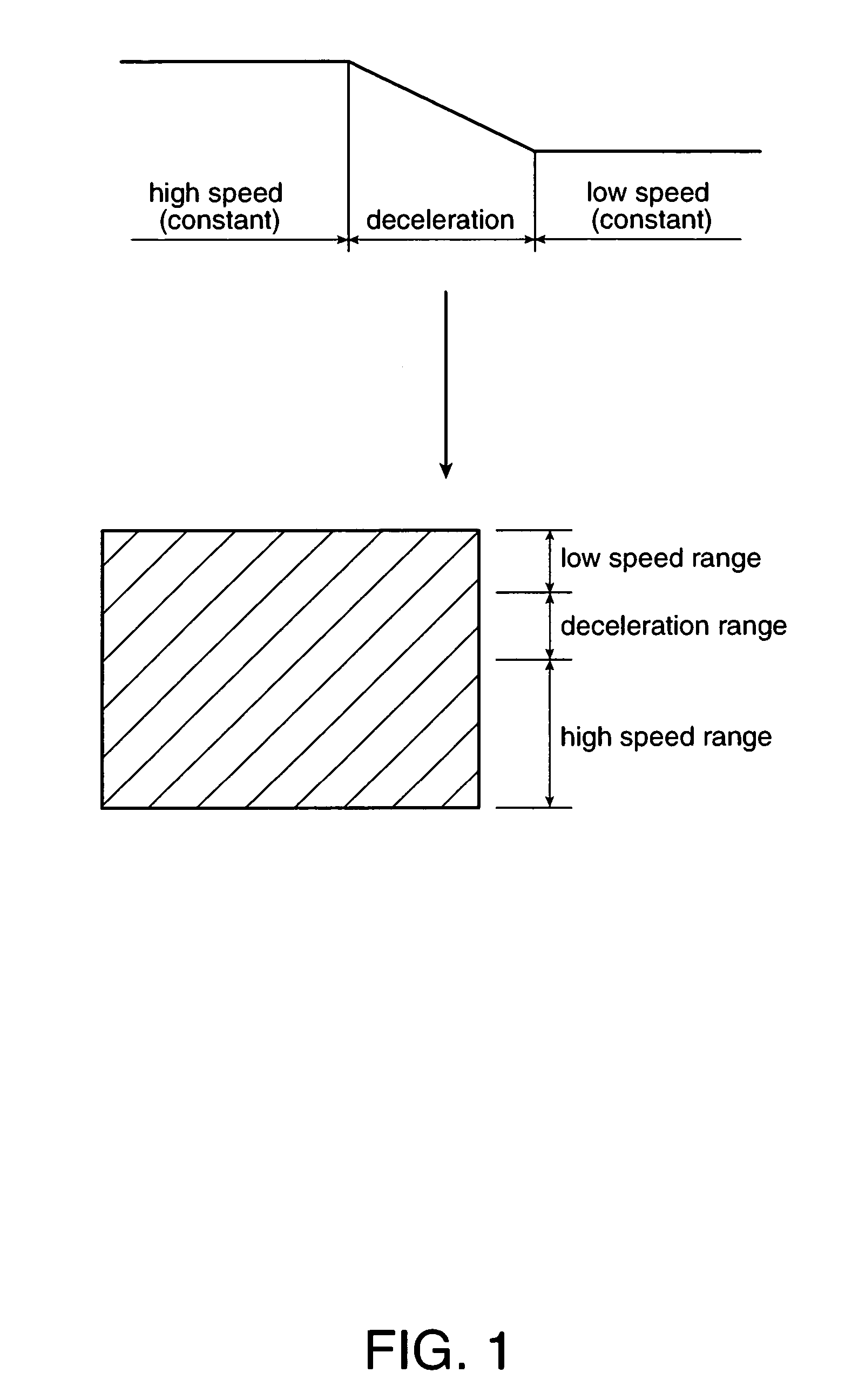Thermal printer and thermal printer control method
a control method and printer technology, applied in printing and other directions, can solve the problems of thermal printer generally overheating excessively, affecting print quality, and accumulating heat,
- Summary
- Abstract
- Description
- Claims
- Application Information
AI Technical Summary
Benefits of technology
Problems solved by technology
Method used
Image
Examples
Embodiment Construction
[0036]Print Speed Variation State
[0037]The thermal printer and control method of the present invention assures good print quality by monitoring the print speed variation state particularly during print speed deceleration. The print speed variation state as used herein is the state in which the print speed V (see FIG. 3) increases or decreases continuously for a predetermined period of time. As described above, the print duty often differs greatly when printing text and when printing a logo or other graphic, and the print speed V decreases continuously over a predetermined period of time during the transition from text printing to logo printing (such as during deceleration period 11 in FIG. 3). A drop in print quality is particularly pronounced when the rate of the decrease in the print speed V (the rate of deceleration) is high. More specifically, the drop in print quality increases as the drop in print speed V increases and the deceleration time decreases. In addition to the rate o...
PUM
 Login to View More
Login to View More Abstract
Description
Claims
Application Information
 Login to View More
Login to View More - R&D
- Intellectual Property
- Life Sciences
- Materials
- Tech Scout
- Unparalleled Data Quality
- Higher Quality Content
- 60% Fewer Hallucinations
Browse by: Latest US Patents, China's latest patents, Technical Efficacy Thesaurus, Application Domain, Technology Topic, Popular Technical Reports.
© 2025 PatSnap. All rights reserved.Legal|Privacy policy|Modern Slavery Act Transparency Statement|Sitemap|About US| Contact US: help@patsnap.com



